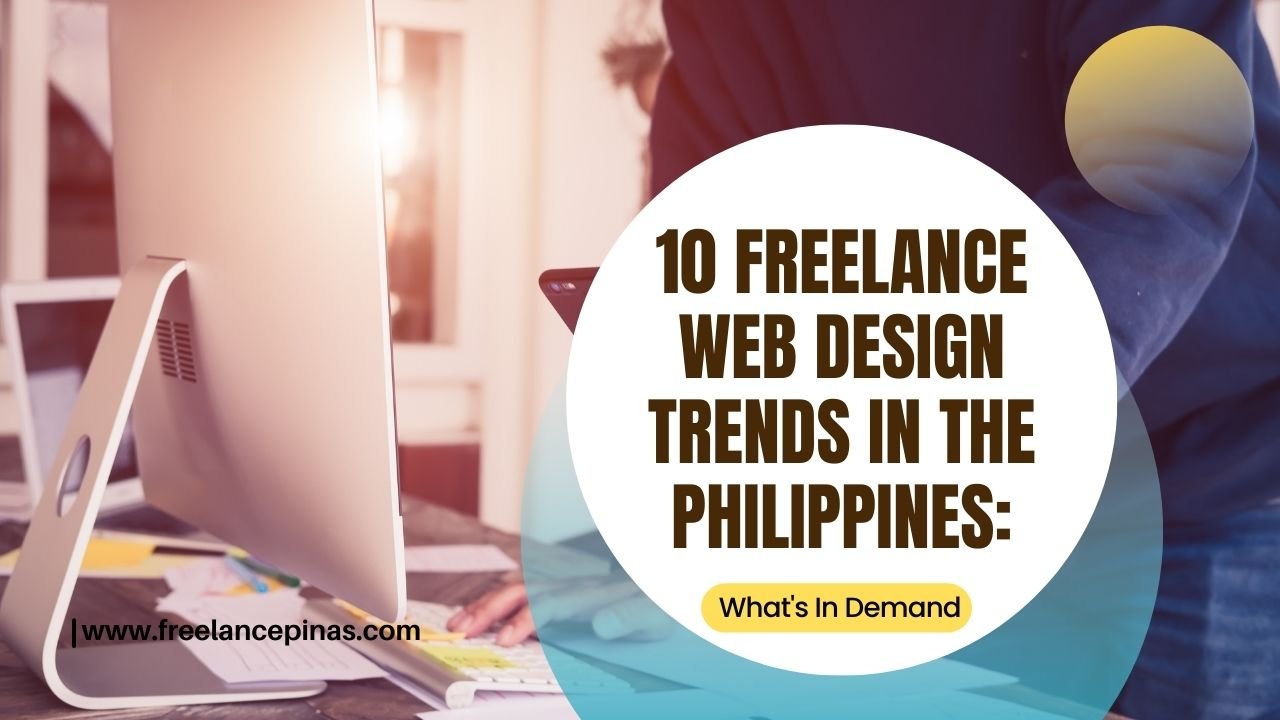In the fast-paced world of web design, staying ahead of the curve is key to success. This is especially true in the Philippines, where the demand for skilled freelance web designers is on the rise. Clients are not just looking for visually appealing websites; they want sites that offer seamless user experiences and incorporate the latest design trends. In this comprehensive guide, we’ll delve into the current web design trends that are highly sought after in the Philippine freelance market.
1. Minimalist and Functional Designs
- The Allure of Simplicity
- Minimalist designs have gained immense popularity for their clean and uncluttered appearance. They not only create a visually pleasing interface but also enhance user engagement by focusing on essential elements.
- User-Centric Navigation and Functionality
- Streamlined navigation and functional design elements are crucial for ensuring users can easily navigate a website. Intuitive layouts and clear call-to-action buttons contribute to a seamless user experience.
2. Mobile-First Design Approach
- Prioritizing Mobile User Experience
- With the majority of internet users accessing websites via mobile devices, a mobile-first approach is paramount. Designing for mobile ensures that the site is optimized for smaller screens without compromising functionality.
- Responsive Design for Various Screen Sizes
- A responsive design adapts to different screen sizes, providing an optimal viewing experience on desktops, tablets, and smartphones. This approach guarantees that the website remains visually appealing and functional across all devices.
3. Microinteractions and Engaging Animations
- Adding a Touch of Interactivity
- Microinteractions are subtle design elements that engage users and provide feedback during their interactions with a website. These can include animated buttons, hover effects, and progress indicators.
- Enhancing User Engagement and Feedback Loops
- Engaging animations not only capture users’ attention but also guide them through the website’s interface. Thoughtfully designed animations can lead to higher user engagement and improved feedback loops.
4. Bold and Unique Typography
- Typography as a Visual Element
- Choosing the right font is more than just about readability; it’s a design element in itself. Bold and distinctive typography sets the tone for the website’s personality and brand identity.
- Branding Through Distinctive Font Choices
- By selecting unique fonts that align with a brand’s identity, web designers can effectively convey the client’s message and establish a strong brand presence.
5. Dark Mode Integration
- Stylish and Comfortable UI in Low Light
- Dark mode provides an alternative color scheme that is easy on the eyes in low-light environments. It has gained popularity for its aesthetic appeal and its ability to reduce eye strain.
- Design Considerations for Dark Mode
- When implementing dark mode, designers must carefully select colors, ensuring readability and maintaining visual hierarchy. It’s important to strike a balance between aesthetics and functionality.
6. Incorporating 3D Elements
- Depth and Realism in Web Design
- Integrating three-dimensional elements adds depth and realism to websites, creating a visually immersive experience for users.
- Balancing 3D Elements for Performance
- While 3D elements can enhance visual appeal, it’s essential to optimize them for performance to ensure fast loading times and smooth user interactions.
7. Personalization and Customization
- Tailoring User Experiences
- Personalization involves creating tailored experiences based on user behavior, preferences, and demographics. It fosters a stronger connection between the user and the website.
- Dynamic Content for Individual Users
- Dynamic content delivery ensures that users receive relevant information and recommendations, enhancing their overall experience and increasing engagement.
8. Accessibility-Centric Design
- Designing for All Users
- Web designers must prioritize accessibility by ensuring that websites are usable for individuals with disabilities. This includes considerations for screen readers, keyboard navigation, and color contrast.
- Compliance with Web Content Accessibility Guidelines (WCAG)
- Adhering to WCAG guidelines guarantees that websites are accessible to all users, regardless of their abilities or disabilities. It’s a critical aspect of inclusive web design.
9. E-commerce-Centered Design Principles
- Optimizing Online Shopping Experiences
- For e-commerce websites, user experience is paramount. Implementing intuitive navigation, clear product listings, and seamless checkout processes is essential for driving conversions.
- Conversion-Driven Design for E-commerce Platforms
- Design choices should be geared towards encouraging users to take specific actions, such as making a purchase. Well-designed e-commerce sites can significantly impact a business’s bottom line.
10. SEO-Driven Design Strategies
- Merging Design with Search Engine Optimization
- Effective web design goes hand in hand with SEO. By optimizing elements like site structure, page speed, and mobile-friendliness, designers contribute to improved search engine rankings.
- Best Practices for SEO-Friendly Web Design
- Designers should stay updated with SEO best practices to ensure that websites are not only visually appealing but also easily discoverable by search engines.
Navigating Trends for Client Success
As a freelance web designer in the Philippines, embracing these trends is crucial for meeting the demands of clients and staying competitive in the industry. By integrating these design elements into your projects, you’ll not only create visually stunning websites but also provide exceptional user experiences. Stay at the forefront of industry trends to elevate your freelance web design career.
Remember, a successful web designer is one who can skillfully blend creativity with functionality, resulting in websites that leave a lasting impression on users. The trends highlighted in this guide are not just fleeting fads; they represent the future of web design.
Note: The effectiveness of incorporating these trends may vary based on individual project requirements and client preferences. Always consider the specific needs of each project when implementing design elements.
